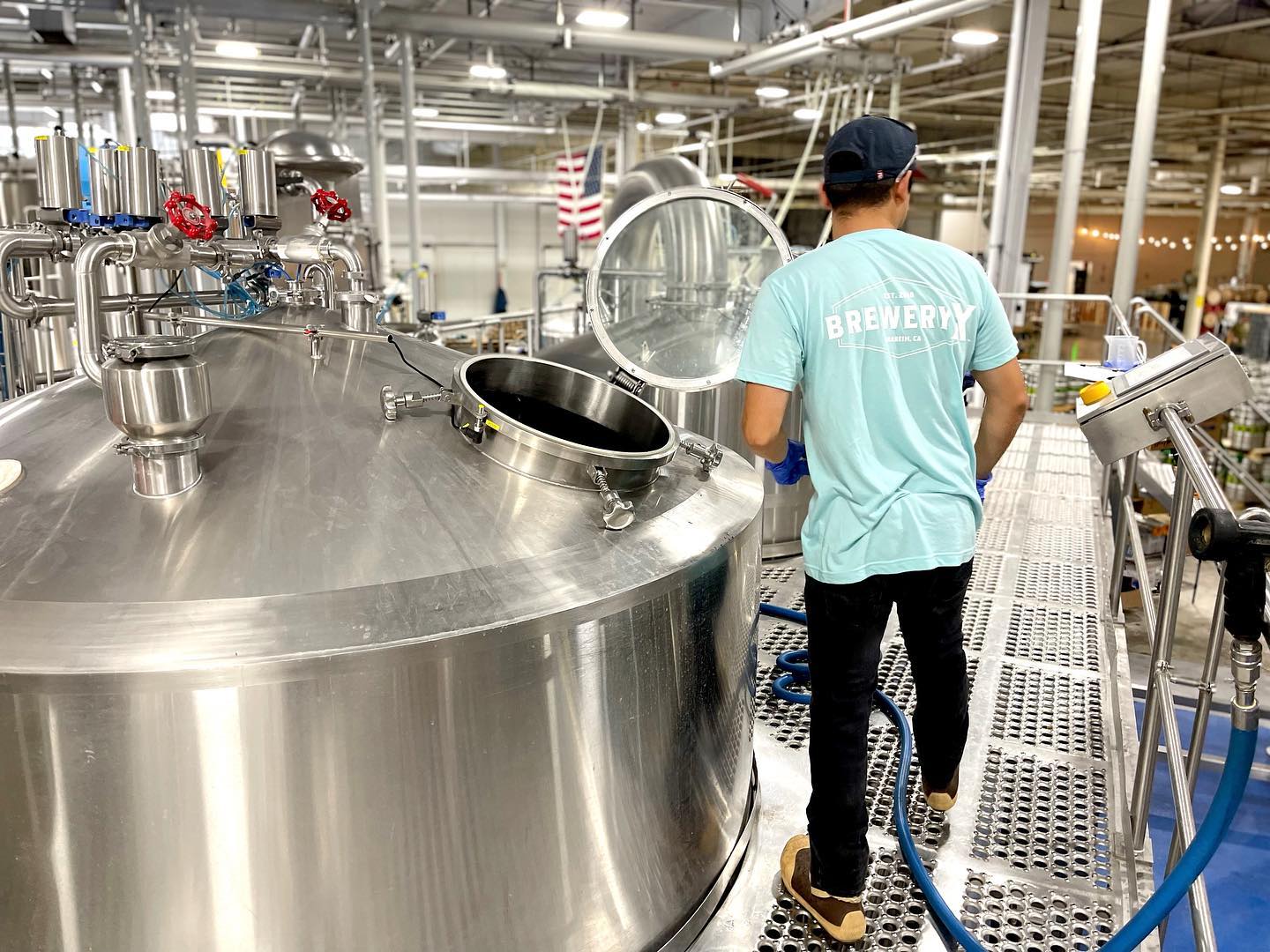How Brewery Serving Tanks are Used in Breweries
The Role of Brewery Serving Tanks in the Beer Brewing Process
If you’ve ever sipped a pint of beer straight from the tap and thought, “Damn, this tastes insanely fresh!”, there’s a good chance a brewery serving tank had something to do with it. These tanks aren’t just large steel cylinders tucked away in the back of a brewery—they’re critical players in delivering that crisp, carbonated, fresh-poured experience.
In the grand narrative of beer brewing, serving tanks sit at the final chapter. After the beer has been mashed, boiled, fermented, and conditioned, it’s time to pour. But before that perfect pour happens, beer is often transferred into serving tanks—also called draft beer tanks or BBTs (bright beer tanks in some cases, though they’re not always the same thing). This final stop is where beer is held under pressure, chilled, and kept stable before making its way into your pint glass or keg.
Serving tanks are often hooked directly to tap lines, especially in brewpubs and smaller craft breweries, bypassing the kegging process altogether. This isn’t just a logistical convenience—it’s a quality control move. Less handling means less chance for contamination or carbonation loss.
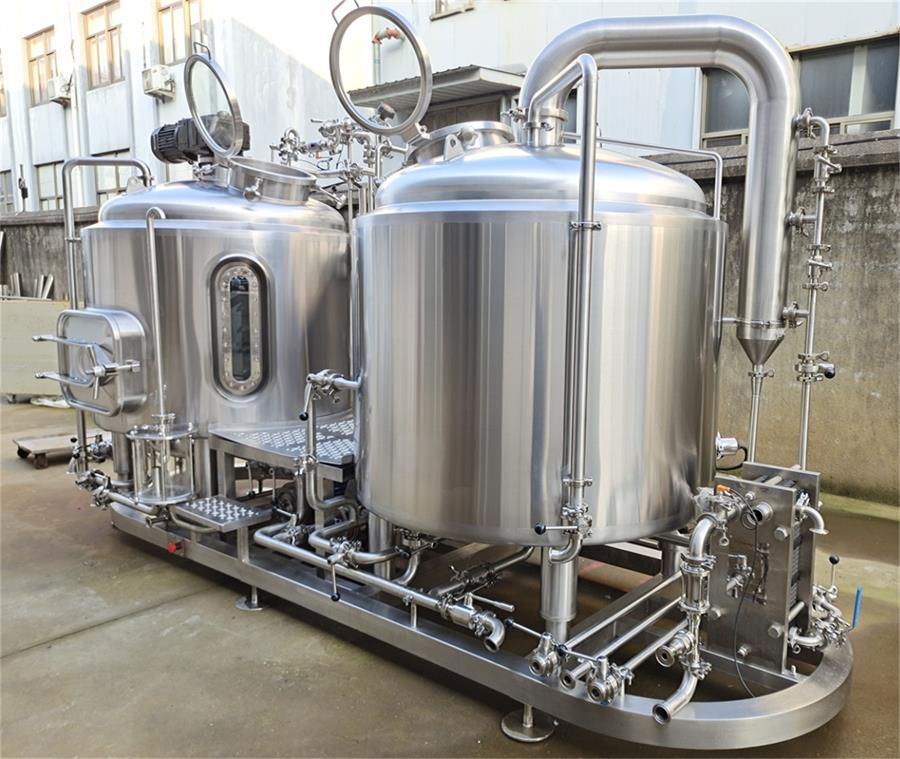
Function & Usage of Brewery Serving Tanks
Let’s cut through the foam and get into what brewery serving tanks really do. These tanks are pressurized, stainless-steel vessels designed to store finished beer. Once the beer completes its fermentation and conditioning (whether in a separate fermenter or bright tank), it’s pumped into a serving tank. Why? Because serving tanks offer a highly controlled environment for keeping beer stable and carbonated at the perfect temperature until it’s served.
Think of it like a hotel for beer. The beer has been through a lot (yeast drama, sugar transformations, cold crashes), and now it needs a comfy, clean space to rest before showtime. Serving tanks are exactly that: a cozy, temperature-controlled, CO2-regulated holding chamber.
Here’s where it gets more functional. Serving tanks come with fittings and attachments for direct connection to tap lines. This means they can replace kegs entirely in some setups. No keg washing, no moving, no switching out when a line runs dry. Just a continuous, steady flow of beer on tap. In fact, many breweries now install serving tanks vertically behind the bar in glass showcases to let customers admire the sheer industrial glory.
Comparison Between Brewery Serving Tanks, Fermentation Tanks, and Bright Beer Tanks
Alright, here’s where people get confused. Aren’t serving tanks the same as bright tanks? And what about fermentation tanks? Let’s break it down.
Fermentation tanks are where the magic begins. They’re usually conical-bottomed tanks where wort and yeast do the fermentation tango. These tanks are designed to handle vigorous CO2 off-gassing and yeast sediment collection. They’re often double-jacketed for precise temperature control and are built to withstand internal pressures during active fermentation.
Bright beer tanks (BBTs), on the other hand, are the “finishing school” for beer. Post-fermentation, beer is transferred to a BBT for clarification, carbonation, and maturation. Think of it as the grooming phase—filtering, refining flavors, getting those bubbles just right.
Serving tanks, by comparison, are essentially storage tanks with serving capabilities. They can resemble bright tanks in structure but are often optimized for beer dispensing. In some systems, the BBT and serving tank are the same piece of equipment. In others, serving tanks are a completely separate stage, placed close to the tap lines for efficiency.
Here’s a quick breakdown:
| Feature | Fermentation Tank | Bright Beer Tank | Brewery Serving Tank |
|---|---|---|---|
| Purpose | Fermenting wort into beer | Maturing, clarifying, and carbonating beer | Storing and dispensing finished beer |
| Pressure Rated | High | Medium to High | Medium |
| Temperature Control | Precise (active cooling needed) | Required for conditioning | Required for storage |
| Usage Location | Brewhouse cellar | Brewhouse or packaging area | Near taps or service bar |
| Connection to Tap Lines | No | Sometimes | Yes |
| Typical Design | Cylindroconical | Horizontal or vertical cylindrical | Often horizontal |
| Visibility to Customers | Rare | Rare | Often showcased |


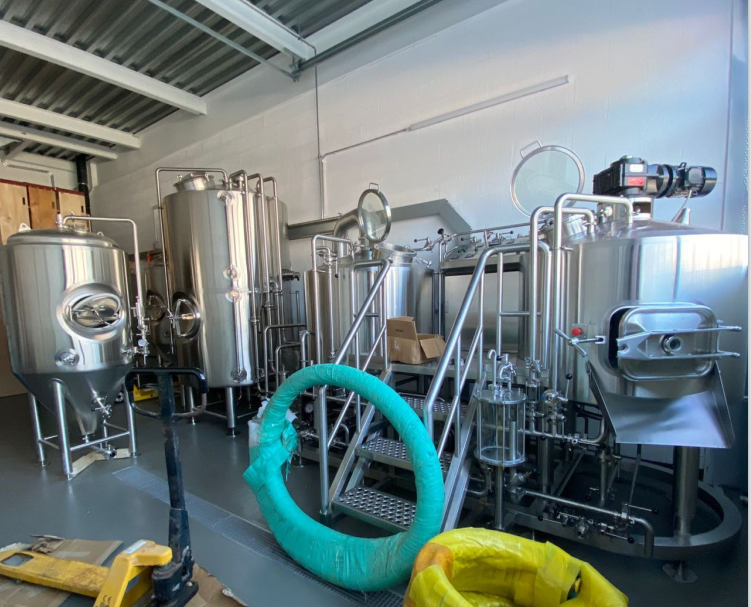
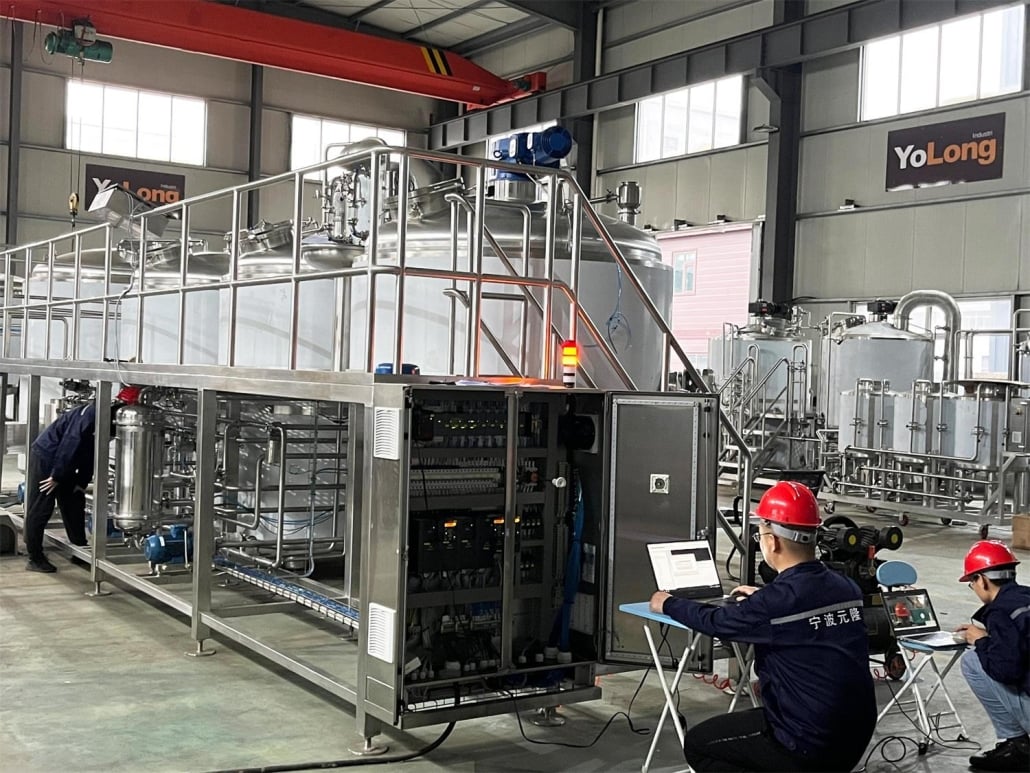
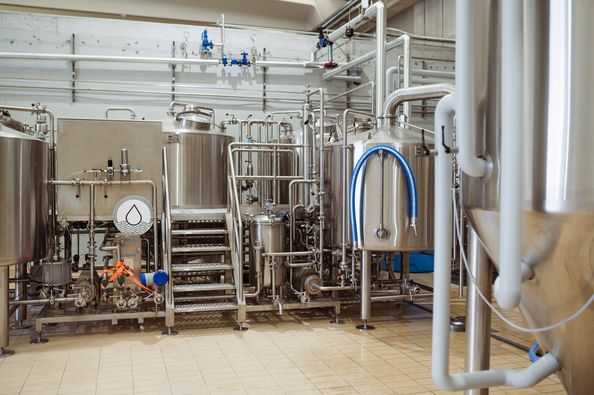
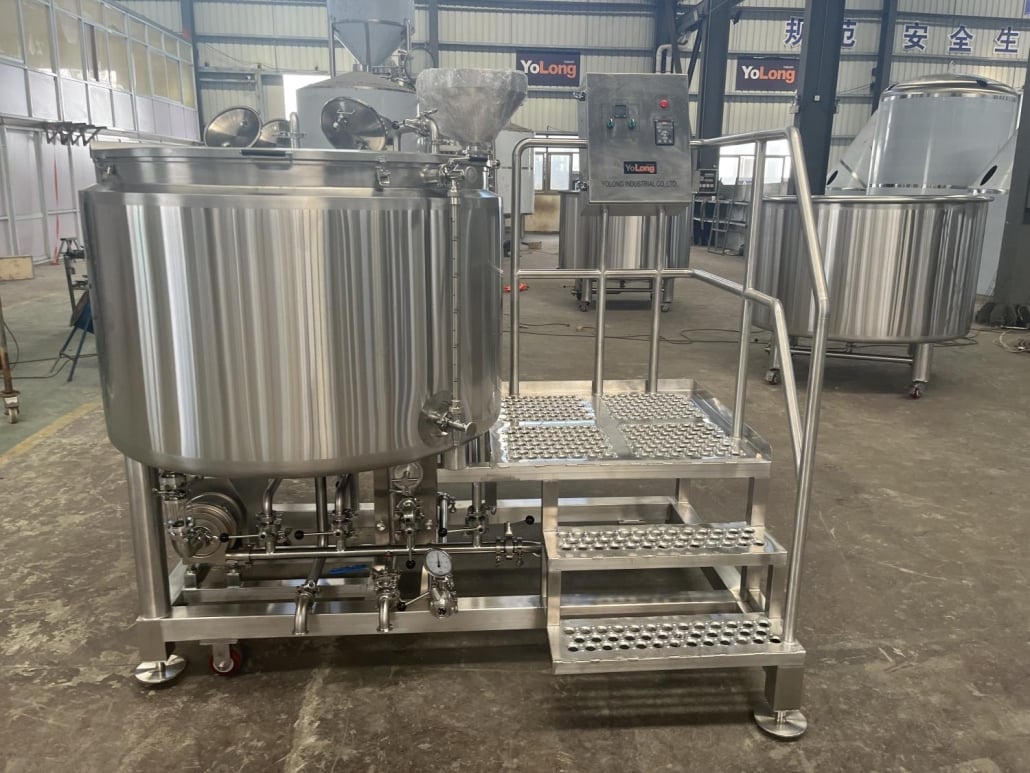
Technical Specs & Design Features of Brewery Serving Tanks
Let’s geek out a little, shall we? The specs and design features of serving tanks can make or break their efficiency. Here are the essentials:
| Feature | Description |
|---|---|
| Material | Food-grade 304 or 316 stainless steel for corrosion resistance and easy cleaning |
| Capacity Range | From 100 liters (small brewpubs) to 5,000+ liters (large scale breweries) |
| Orientation | Horizontal for space efficiency; vertical for aesthetics and gravity-fed dispensing |
| Cooling System | Glycol jacket or direct jacketed cooling to maintain stable temperature (typically 0-4°C) |
| Pressure Rating | Usually up to 3 bar (43.5 psi), enough for pressurized CO2 storage and draft dispensing |
| Insulation | Polyurethane foam insulation (50-100mm) for consistent internal temperature |
| Clean-in-Place (CIP) | CIP spray ball installed for thorough automated cleaning |
| Valves & Fittings | Sample valve, carbonation stone, pressure relief valve, sight glass, racking arm, manway |
| Surface Finish | Mirror-polished interior (Ra<0.4μm) for hygiene; matte or polished exterior for aesthetic |
| Optional Features | CO2 regulator, sight level indicator, mobile skid mount, digital pressure/temperature gauges |
Buying Guide of Brewery Serving Tanks
So you want to buy a serving tank? Awesome. But let me stop you before you drop your credit card like you’re ordering off Amazon. This is a major investment, and there are a few things to keep in mind.
First, think scale. Are you a cozy brewpub pouring a few hundred liters a week? Or a growing microbrewery with taproom dreams? The size and number of tanks should match your production volume and sales velocity. Too small, and you’ll be constantly refilling; too large, and you risk oxidation and staleness.
Next, placement matters. Will these tanks be in the brewhouse cellar or showcased behind the bar? If you’re putting them in public view, aesthetics count. A sleek vertical tank with polished steel and custom branding can become a visual centerpiece.
Consider pressure rating and carbonation needs. If you’re planning to carbonate in the tank or keep beer under high pressure for long stretches, make sure the tank can handle it. Bonus if it comes with a built-in carbonation stone and regulator.
And don’t forget hygiene. You want tanks that are easy to clean, with CIP systems, smooth interior welds, and minimal dead zones. This isn’t just about making cleaning easy—it’s about keeping your beer from tasting like dishwater.
Finally, price. New serving tanks can run anywhere from $2,000 to over $20,000 depending on size, features, and customization. Used options exist, but be sure to inspect for signs of corrosion, poor welding, or outdated fittings.
| Price Range | Capacity (liters) | Ideal For |
|---|---|---|
| $2,000 – $4,000 | 100 – 500 | Small brewpubs, pilot systems |
| $5,000 – $10,000 | 500 – 2,000 | Mid-size taprooms, microbreweries |
| $10,000 – $20,000+ | 2,000 – 5,000+ | Production-scale craft breweries |
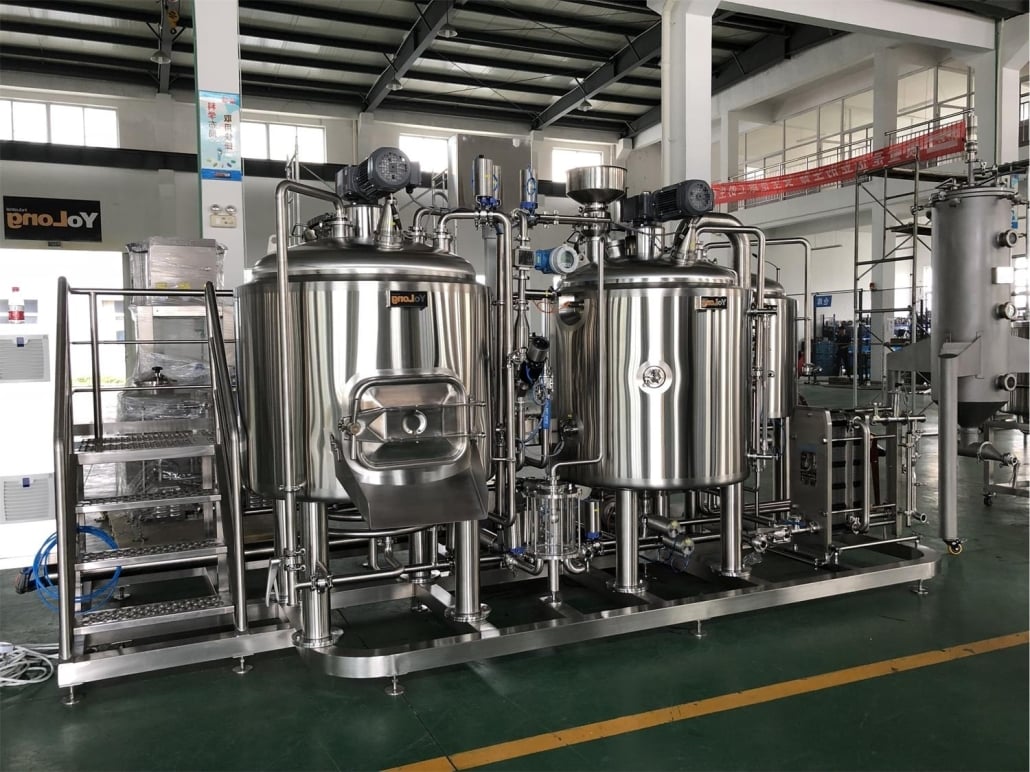
FAQ
| Question | Answer |
|---|---|
| What is the difference between a serving tank and a bright tank? | Bright tanks are used for final conditioning, while serving tanks are used for direct beer dispensing. Sometimes they overlap, but not always. |
| Can I use a serving tank as a bright tank? | Technically, yes. If it’s pressure-rated and temp-controlled, it can do both jobs. But dedicated systems offer better workflow. |
| Are serving tanks worth it for small breweries? | Absolutely. They simplify operations, improve consistency, and cut out kegging labor if taproom sales dominate. |
| Do serving tanks affect beer taste? | If well-maintained, they preserve freshness and carbonation better than kegs due to less oxygen exposure. |
| How do I clean a serving tank? | Use a CIP system with appropriate cleaners. Sanitize after each emptying cycle to prevent biofilm and spoilage. |
| Should I get vertical or horizontal tanks? | Horizontal tanks save space in tight breweries; vertical tanks are easier to showcase and gravity-feed. Choose what fits your layout. |
Additional FAQs About Brewery Serving Tanks
1) What pressure rating should Brewery Serving Tanks have for direct dispense?
- For most taproom setups, 1–2 bar (15–30 psi) working pressure with a certified PRV is sufficient. Higher ratings (up to ~3 bar) help if you carbonate and serve from the same tank.
2) Can I push beer with CO2 or use a beer pump from serving tanks?
- Both work. CO2 pushing is simplest for short runs; for long-draw systems, use a sanitary diaphragm beer pump with low shear and maintain a CO2/N2 headspace to protect carbonation.
3) How do I prevent oxygen pickup when transferring into Serving Tanks?
- Purge the tank and lines with CO2, use closed, pressure-to-pressure transfers from bright/fermenter, and verify DO at the outlet. Target package-ready DO <30–50 ppb.
4) What’s the recommended cleaning regime for Serving Tanks used for direct dispense?
- After each emptying: CIP with 2–3% caustic at 60–70°C for 15–20 min, water rinse to neutral, periodic 0.5–1% acid cycle to remove beerstone, and sanitize cold before filling.
5) Are horizontal or vertical Serving Tanks better behind the bar?
- Horizontal tanks maximize capacity under counters; vertical tanks showcase better and ease sampling/maintenance. Choose based on space, line routing, and customer visibility goals.
2025 Industry Trends for Brewery Serving Tanks
- Taproom-first design: More brewpubs replace kegs with jacketed Serving Tanks plumbed directly to towers for freshness and labor savings.
- Better hygiene by design: Forward-sealing sample valves, crevice-free fittings, and documented passivation reduce biofilm risk.
- Inline quality control: Dissolved oxygen (DO) sampling ports and pressure/temperature sensors tied to cellar controllers are becoming standard.
- Energy and water efficiency: Thicker insulation, VFD glycol pumps, and heat-recovery chillers cut utility intensity 10–20%.
- Mixed-gas dispense growth: CO2/N2 blends stabilize pours over long draws without over-carbonation.
2025 Benchmarks and Cost Snapshot (North America/EU)
| Metric | 2023 Avg | 2024 Avg | 2025 YTD | Notes/Sources |
|---|---|---|---|---|
| 500–1,000 L serving tank price | $5k–$9k | $4.8k–$8.8k | $4.5k–$8.5k | Finish/ports/pressure rating vary |
| 2,000–5,000 L serving tank price | $10k–$20k | $9.5k–$19k | $9k–$18k | Ex-works; insulation adds cost |
| Typical working pressure (bar) | 1.5–2.0 | 1.5–2.0 | 1.5–2.0 | PRV + vacuum protection |
| Draft line cleaning interval (days, median) | 14 | 14 | 10–14 | Quality focus in taprooms |
| DO after transfer (ppb, median) | 50–80 | 40–70 | 30–60 | Closed transfers, DO ports |
| Water:beer ratio (hl/hl) | 6.0–7.5 | 5.0–6.8 | 4.5–6.0 | CIP reuse, insulation gains |
Authoritative sources:
- Brewers Association, Draught Beer Quality and cellar best practices — https://www.brewersassociation.org/
- Master Brewers Association Technical Quarterly (CIP/oxygen) — https://www.mbaa.com/publications/tq/Pages/default.aspx
- Cicerone draft quality guidance — https://www.cicerone.org/
Latest Research Cases
Case Study 1: Switching from Kegging to Direct-Serve Tanks in a Taproom (2025)
Background: A 10 bbl brewpub spent significant labor/time kegging and saw variable pour quality at peak hours.
Solution: Installed three 1,000 L jacketed Brewery Serving Tanks behind the bar with closed transfers, inline DO checks, and mixed-gas blender for long draws.
Results: Kegging labor cut by ~7 hours/week; first-pour foam complaints down 58%; DO on transfer reduced to 35–45 ppb; annual keg washer maintenance deferred. References: BA Draught Quality Manual; MBAA oxygen control articles.
Case Study 2: CIP Optimization and Beerstone Control in Serving Tanks (2024)
Background: Off-aromas after high-attenuation seasonal beers indicated cleaning gaps.
Solution: Validated spray coverage, introduced conductivity-controlled caustic, added monthly acid CIP (phosphoric/nitric) and quarterly passivation checks; replaced worn gaskets.
Results: Zero off-flavor incidents over 90 days; CIP time reduced 15%; chemical use down 12%; sensory panel variance decreased. Sources: MBAA TQ CIP validation; OEM spray device specs.
Expert Opinions
- Neil Witte, Master Cicerone and Draught Quality Expert
Viewpoint: “Serving tanks shine only when draft lines are balanced and cleaned on schedule. The pour is your quality audit.” - Mary Pellettieri, Quality Consultant and Author
Viewpoint: “Specify sample valves, DO ports, and verifiable cleanability. Those small details in Brewery Serving Tanks protect flavor stability.” - Mitch Steele, Brewmaster and Author
Viewpoint: “Shortening the path from bright tank to glass—ideally via serving tanks—reduces oxygen exposure and preserves hop character.”
Practical Tools and Resources
- Brewers Association: Draught Beer Quality Manual and cellar SOPs — https://www.brewersassociation.org/
- Cicerone: Draft system training for staff — https://www.cicerone.org/
- Micromatic: Draft design calculators and cleaning SOPs — https://www.micromatic.com/
- MBAA Technical Quarterly: CIP validation, oxygen management — https://www.mbaa.com/publications/tq/Pages/default.aspx
- ProBrewer: Forums and case studies on serving tank installs — https://www.probrewer.com/
Last updated: 2025-09-28
Changelog: Added 5 targeted FAQs; 2025 trend snapshot with benchmark table; two recent case studies; expert viewpoints; curated cellar/draft resources for Brewery Serving Tanks
Next review date & triggers: 2026-03-31 or earlier if tank pricing shifts >10%, BA/MBAA issue new draft/CIP guidance, or DO performance benchmarks change
Share this entry
Interested in learning more about Brewing Systems including additional details and pricing information? Please use the form below to contact us!
YOLONG BREWERY EQUIPMENT FAQS
- Commercial Brewery / Craft Brewery / Microbrewery / Nanobrewery
- What is The Difference Between Craft Beer and Industrial Beer?
- The Bespoke Differences In Custom Brewing Systems
- Everything You Need to Know About Kettle Souring
- How to Choose Brewing Equipment for Your business?
- How To Choose The-Best Partner To Build Your Commercial Microbrewing System?
- Two Detection Sensors That You Need To Use In Your Brewhouse System
- Remote Control Applications in Brewing Equipment/How does it work?
- How To Clean Your Brand New Brewery Tanks?

